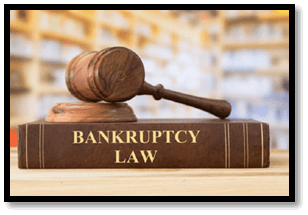What is the full form of IBCIBC: Insolvency & Bankruptcy CodeThe Insolvency & Bankruptcy Code, 2016 (IBC) is indeed an Indian act that establishes a unified framework for the administration of insolvency & bankruptcy proceedings for businesses, partnership entities, and private individuals. For the purpose of resolving claims involving insolvent companies, the Centre introduced the IBC in 2016. 
The bankruptcy code offers a one-stop alternative to the lengthy, inefficient process that was previously used to resolve insolvencies. The goal of the code is to ease the burden of doing business while safeguarding the interests of local investors. 11 Schedules and 255 sections make up the IBC. IBC was created with the intention of addressing the bad loan issues plaguing the banking industry. The debtor-creditor relationship has changed as a result of the IBC procedure. Several significant cases have been concluded in the past two years, while others are nearing settlement. It offers a time-limited procedure to end insolvency. When a debtor doesn't make their payments on time, creditors seize ownership of their assets and must make judgments about how to deal with their insolvency. Both the debtor and the creditor may initiate "recovery" procedures against the other under IBC. Under IBC, businesses have 180 days to complete the whole insolvency process. If the creditors do not voice their opposition to the extension, the timeframe may be extended. The entire insolvency process must be completed within 90 days for smaller businesses, including start-ups, with an annual revenue of Rs 1 crore; the deadline may be postponed by 45 days. If debt relief is not achieved, the business will be liquidated. History
On August 22, 2014, the Ministry of Finance established the Committee on Bankruptcy Legislative Reforms (BLRC). T. K. Viswanathan served as the chairman of the committee, which was tasked with creating a new bankruptcy law. On November 4th, 2015, the Committee turned in its report, which also contained a draught law. Mr. Arun Jaitley, the finance minister, introduced the Insolvency and Bankruptcy Code, 2015, a revised version of the draught bill that incorporated public feedback, in the sixteenth Lok Sabha. The proposal was submitted on December 23, 2015. The bill was referred to the Joint Parliamentary Standing Committee on the Insolvency and Bankruptcy Code, 2015 (JPC), for in-depth analysis. On April 28, 2016, the JPC turned in its report, which also contained an updated version of the Bill. The Lok Sabha approved it on May 5, 2016, and the Rajya Sabha approved it on May 11, 2016. President Pranab Mukherjee then gave his approval, and on May 28, 2016, it was announced in The Gazette of India. ProvisionsAll current insolvency rules have been combined into a single, strong, smart, and contemporary framework with the advent of the IBC. Corporate debtors who are struggling financially are urged to find a solution and, if that is not possible, to dissolve in a reasonable timeframe. A speedy resolution to insolvency and bankruptcy proceedings is the goal of the Insolvency and Bankruptcy Code. The code will support the growth of credit markets, promote entrepreneurship, and stimulate more private investment, which will result in greater economic development and growth. Organizations and individuals are equally subject to insolvency. Bankruptcy is a formal declaration of insolvency. Insolvency results from the inability to pay debts owing to a lack of cash flow. When assets do not equal obligations, it is said to be insolvent under IBC. Insolvency results in bankruptcy for non-companies & liquidation for corporations when left unchecked. Even after the business model generates revenues, financial failure is the apparent discrepancy between expenditures by the enterprise and cash flow into the enterprise. Failure of the business model to generate sufficient money to meet the commitments of the company. Debt investments are made with the money of investors in return for guarantees of predictable future cash flows. Despite this, the timing of payback makes the rewards of these investments unclear. Either the business or person will follow through on their commitment to pay, or they won't. These types of debtors are regarded as insolvent. A borrower may be insolvent in relation to outright fraud for the reasons listed:
Next TopicFull Form Lists
|
 For Videos Join Our Youtube Channel: Join Now
For Videos Join Our Youtube Channel: Join Now
Feedback
- Send your Feedback to [email protected]
Help Others, Please Share










